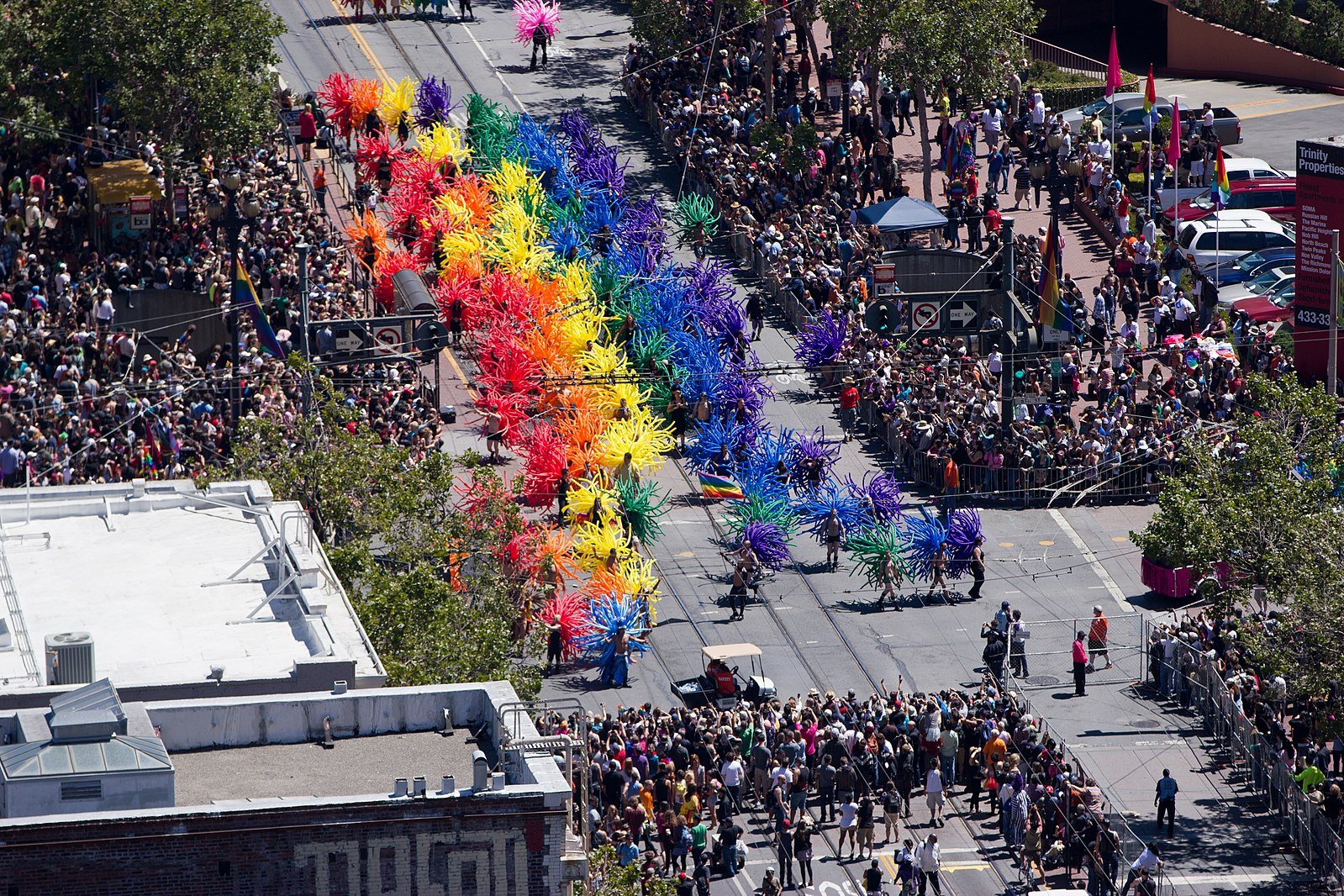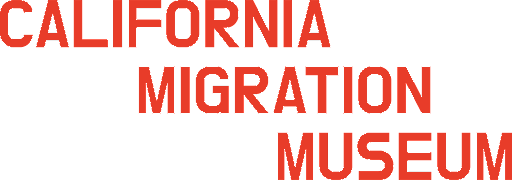
Castro: Lesson 1
Life Lessons: Mainstream American Views on the LBGTQ Community in 1964
Topic
Mainstream Emergence of LBGTQ Culture in the Polarized 1960s
Objectives
1. Explore the cultural shifts in the 1960s between liberal and conservative ideologies.
2. Discuss the significance of LBGTQ culture appearing in Life Magazine.
3. Use analysis to make historical inferences about this tumultuous era.
Grade
U.S. History
On level through Advanced Placement and the International Baccalaureate, AP American Government and Politics, Civics
Essential Question
How does the coverage of LGBTQ+ culture in the most read magazine in America at the time reflect the shifts in 1960s American society?
Overview
Welcome to Eureka Valley, Scene 3: Landing in the Castro - 1957, Scene 1: The Salon, Scene 5: Harvey's Castro from "At Home in the Castro" the CMM Castro Walk. This lesson plan allows students to explore the context of the Castro Walk through the push and pull of the liberal/ conservative ideologies of the 1960s, while reading the first mainstream article "Homosexuality in America" about LBGTQ+ culture in Life Magazine, the most widely ride periodical of the era.
Often viewed through the lens of the Vietnam War, the 1960s represents one of the most defining decades in American history, with a decisive heterogenous splintering from the perceived homogenous prosperity of the 1950s. Centered in the San Francisco Bay Area, liberal students, from the most prestigious public university in the country U.S. Berkeley, started the Free Speech Movement which expanded into the antiwar movement.
Countercultural hippies in the Haight Ashbury originated out of the North Beach City Lights Beats of the 1950s pushing against conformity. Black Panthers fed children in Oakland while protesting police brutality in Sacramento, and Eureka Valley began to shift away from its 1950s Irish Catholic roots towards becoming the epicenter of LBGTQ+ culture and activism known as the Castro. For many the tension between liberal and conservative reached a breaking point at the 1968 Democratic National Convention when, on live TV, the Chicago Police beat antiwar demonstrators outside of the convention.
Yet 1964, with the escalation of the Vietnam War and the aftermath of the assassination of John F. Kennedy, also represents a turning point as the new emerging liberal movements began to break into the mainstream, no longer labeled as fringe. That summer Life Magazine, arguably the most read and one of the most influential publications in the country, published an essay called "Homosexuality in America" by Paul Welch instantly catapulting San Francisco into the national conscious as the "gay capital" of America. This infamous and wide-ranging article openly explored the factors which brought young LBGTQ+ people to California where they could establish themselves as part of mainstream society, while acknowledging the risks and animosity they still faced.
The Black Cat Cafe, a notoriously gay hangout in San Francisco. Credit: Black Cat: By Samuel A. Cherr
Materials
Students will need a pen, paper, computer, and access to wi-fi.
Key Ideas
1960s Liberal v. Conservative Split, Media and American Culture, Government Powers and Individual Rights
Assessment
Students will jigsaw the seminal mainstream article about Homosexuality from Life Magazine
In 1964 Life magazine published a photographic essay by Paul Welch titled “Homosexuality in America”. Read by millions, it was influential in the framing of San Francisco as the “gay capital of America”
-
While students work on the opening play The Dell Vikings "Come and Go With Me" (2:10), Bill Haley & His Coments (2:20), Frankie Lymon's “Why Do Fools Fall in Love" (2:30), The Token "The Lion Sleeps Tonight" (2:11), The Penguins "Earth Angel" (2:56), Bob Dylan's "The Times They are A-Changin” (3:13), Simon and Garfunkel's "The Sound of Silence" (3:07), The Animals "We Gotta Get Out of This Place" (3:24), Jimi Hendrix "Purple Haze" (2:52), The Rolling Stones "(I Can't Get No) Satisfaction" (3:54).
Students will work in groups of two.
10 minutes: Students will look through the Life Magazine article "The Luckiest Generation" about life for teenagers in the 1950s.
10 minutes: Students will then look through the Far Out Magazine article “Revealing Photos of Counterculture in San Francisco. 1960-1967" about life for teenagers and the youth culture of the 1960s.
5 minutes: Students will complete a 1950s v. 1960s Venn Diagram.
-
Students will combine into groups of four.
For the first twenty minutes have the students read the 1964 Life Magazine article "Homosexuality in America".
Assign each student one of the following questions:
Why is California attractive for LGBTQ+ culture?
What is the Mattachine Society?
How is LBGTQ+ culture repressed according to Life?
Describe the overall tone of the article.
Give students five minutes to brainstorm and answer their question.
In their small groups spend the next 15 minutes sharing and discussing their answers and thoughts about the article.
-
As an exit ticket, have students make a brief argument as to why Life Magazine could publish the article "Homosexuality in America" in 1964. Ask them to address how the push and pull between the conservative and liberal ideologies of the era could have influenced the tone of the article.
While students work play The Mamas and The Papas "California Dreamin" (2:37), The Animals "The House of the Rising Sun" (1:08), The Beatles "You've Got To Hide Your Love Away" (2:09), The Beatles "Yellow Submarine" (2:15).
Lesson (75 Minutes Total):
Standards:
Historical and Social Science Analysis Skills (p727-728)
-
Students compare the present with the past, evaluating the consequences of past events and decisions and determining the lessons that were learned.
Students analyze how change happens at different times; understand that some aspects can change while others remain the same; and understand that change is complicated and affects not only technology and politics but also values and beliefs.
Students use a variety of maps and documents to interpret human movement, including major patterns of domestic and international migration, changing environmental preferences and settlement patterns, the frictions that develop between population groups, and the diffusion of ideas, technological innovations, and goods.
Students relate current events to the physical and human characteristics of places and regions.
-
Students identify bias and prejudice in historical interpretations.
Students construct and test hypotheses; collect, evaluate, and employ information for multiple primary and secondary sources; and apply it in oral and written presentations.
-
Students show the connections, casual and otherwise, between particular historical events and larger social, economic, and political trends and developments.
Students recognize the complexity of historical causes and effects, including the limitations on determining cause and effect.
Students interpret past events and issues within the context in which an event unfolded rather than soley in terms of present day norms and values.
Students understand the meaning, implication. and impact of historical events and recognize that events could have taken other directions.
Students analyze human modifications of landscapes and examine the resulting environmental policy issues.
-
11.8 Students analyze the economic boom and social transformation of post World War II America
4. Analyze new federal government spending on defense, welfare, interest on the national debt, and federal and state spending on education, including the California Master Plan.
7. Describe the effects on society and the economy of technological developments since 1915, including the computer revolution, changes in communication, advances in medicine, and improvements in agricultural technology.
8. Discuss forms of popular culture, with emphasis on their origins and geographic diffusion (e.g. jazz and other forms of popular music, professional sports, architectural and artistic styles).
11.11 Students analyze the major social problems and domestic policy issues in contemporary American society.
Explain how the federal, state, and local governments have responded to demographic and social changes such as population shifts to the suburbs, racial concentrations in the cities, Frostbelt-to-Sunbelt migration, international migration, decline of family farms, increases in out-of-wedlock- births, and drug use.
-
12.1 Students explain the fundamental principles and moral values of American democracy as expressed in the U.S. Constitution and other essential documents of American democracy.
2. Discuss the character of American democracy and its promise and perils as articulated by Alexis de Tocqueville.
3. Explain how the U.S. Constitution reflects a balance between the classical republican concern with promotion of the public good and the classical liberal concern with protecting individual rights; and discuss how the basic premises of liberal concern with protecting individual rights; and discuss how the basic premises of liberal constitutionalism and democracy are joined in the Declaration of Independence as "self-evident truths."
4. Understand that the Bill of Rights limits the powers of the federal government and state governments.
12.2 Students evaluate and take and defend positions on the scope and limits of rights and obligations as democratic citizens, the relationships among them, and how they are secured.
1. Discuss the meaning and importance of each of the rights guaranteed under the Bill of Rights and how each is secured (e.g., freedom of religion, speech, press, assembly, petition, privacy).
3. Discuss the individual's legal obligations to obey the law, serve as a juror, and pay taxes.
4. Understand the obligations of civic-mindness, including voting, being informed on civic issues, volunteering and performing public service, and serving in the military or alternative service.
5. Describe the reciprocity between rights and obligations; that is, why enjoyment o one's rights entails respect for the rights of others.
12.3 Students evaluate and take and defend positions on what the fundamental values and principles of civil society are (i.e., the autonomous sphere of voluntary personal, social. and economic relations that are not part of government), their interdependence, and the meaning and importance of those values and principles for a free society.
1. Explain how civil society provides opportunities for individuals to associate for social culture, religious, economic, and political purposes.
1. Explain how civil society makes it possible for people, individually or in association with others, to bring their influence to bear on government in ways other than voting and elections.
2. Compare the relationship of government and civil society in constitutional democracies to the relationship of government and civil society in authoritarian and totalitarian regimes.
12.5 Students summarize landmark U.S. Supreme Court Interpretations of the Constitution and its amendments.
1. Understand the changing interpretations of the Bill of Rights over time, including interpretations of the basic freedoms religion, speech, press. petition, and assembly) articulated in the First Amendment and the due process and equal-protection-of-the-law clauses of the fourteenth amendment.
12.8 Students evaluate and take and defend positions on the influence o the media on American political lifeе.
1. Discuss the meaning and importance of a free and responsible press.
2. Describe the roles of broadcast, print, and electronic media, including the Internet, as means of communication in American politics.
3. Explain how public officials use the media to communicate with the citizenry and to shape public opinion.
12.10 Students formulate questions about and defend their analyses of tensions within our constitutional democracy and the importance to maintaining a balance between the following concepts: majority rule and individual rights; liberty and equality; state and national authority in a federal system: civil disobedience and the rule to law: freedom of the press and the right to a fair trial; the relationship of religion and government.


